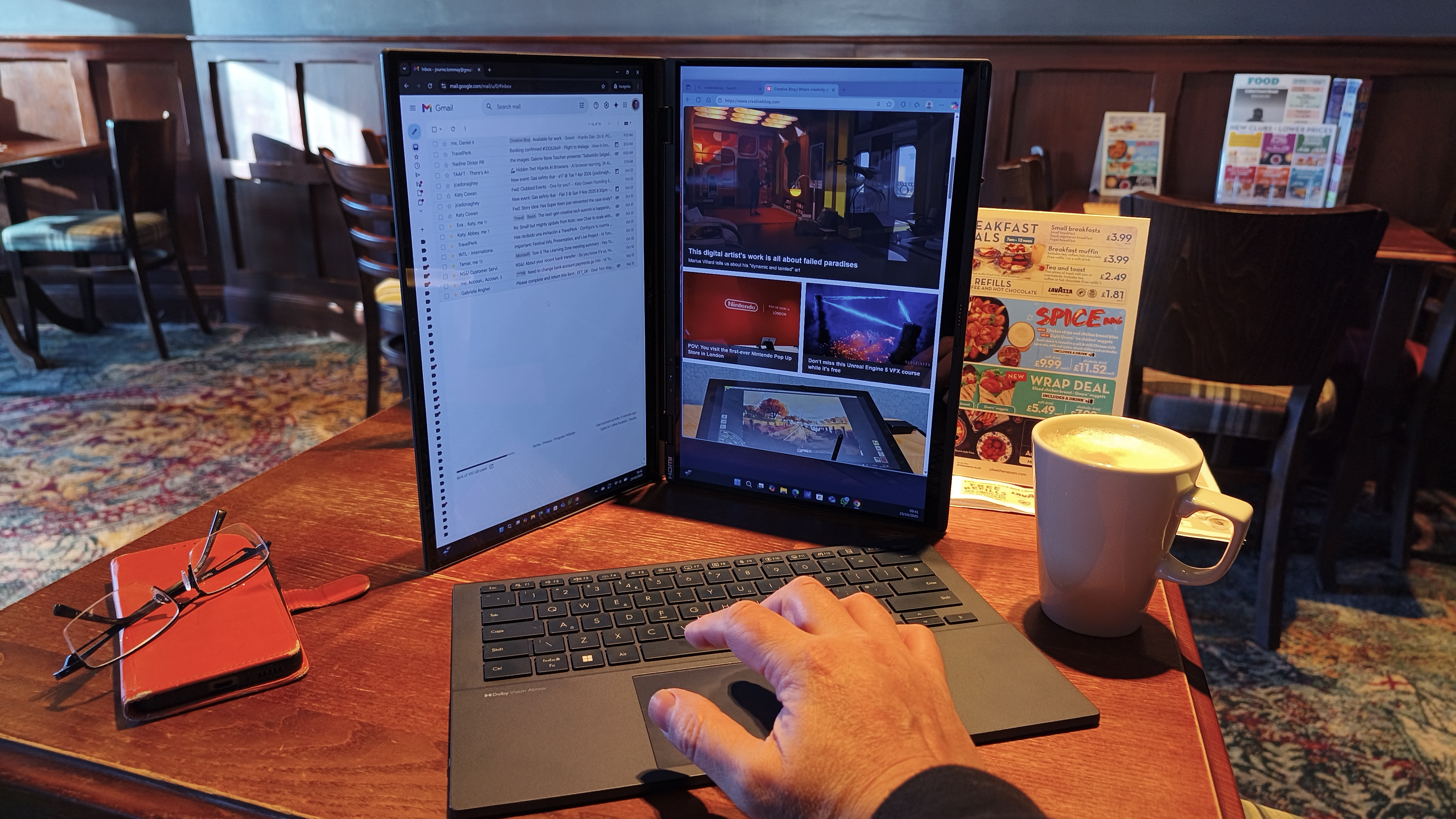
For years, my MacBook Air felt like a part of my body. Opening it felt like coming home. I knew where everything lived, how every gesture worked, which keyboard shortcuts could save me from any creative disaster. It was predictable, elegant, and powerful enough to handle my chaotic workflow. When it came to graphic design laptops, I'd never have chosen anything else.
But here's the thing about comfort zones: you stay contained. You forget there might be other ways to work. Then I saw the ASUS Zenbook Duo at a conference, and something shifted.
Picture this: I'm standing in a crowded tech showcase, watching someone casually flip open what looks like a normal laptop. Except when they lift the keyboard off (yes, off) there's another screen underneath. Two 14-inch OLED displays, stacked like a digital sandwich, suddenly transforming into a portable dual-monitor setup.
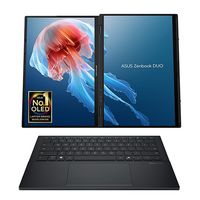
ASUS ZenBook Duo $1,800 $1,700 at Amazon
Save $100: This is a special laptop with special features, providing a unique product. Is it a laptop? Is it a duel monitor? Is it a tablet? Well, it's kind of all three. And there's currently $100 off right now over at Amazon.
Lightbulb moment
My first thought was: That's gimmicky. My second thought was: I need to try that.
Because here's what nobody tells you about working on a single screen, even a beautiful Retina display: you're constantly playing spatial Tetris.
You maximise DaVinci Resolve, then minimise it to check your script. You're alt-tabbing between Photoshop and your reference images. You're dragging Chrome to one side while keeping Spotify controls accessible. It's a never-ending game of which window deserves to be visible right now.
And for a decade, I thought that was just how computers worked.
Daily design news, reviews, how-tos and more, as picked by the editors.
Week 1: Confusion and revelation
I'll be honest—the first few days with the Zenbook Duo felt like learning to walk all over again.
The keyboard is magnetic and detachable, which sounds cool until you're reaching for where the trackpad should be and finding empty space. There's a learning curve to the different modes: dual-screen vertically stacked, desktop mode with screens side-by-side, sharing mode where you can flip one display outward. I spent an embarrassing amount of time accidentally triggering the virtual keyboard by brushing the lower screen with my palm. But gradually, I got used to it. And then suddenly, something clicked.
I was editing a travel video (nothing fancy, just some B-roll from a weekend trip), and I realised I hadn't minimised a single window in 20 minutes. My timeline stretched across the top screen while all my effects, colour grading tools, and asset bins lived on the bottom. I could see everything at once. I wasn't managing windows anymore; I was just... working.
It felt like someone had handed me back hours of my life I didn't know I'd lost.
What changes with two screens
The magic isn't in the specs (though yes, those OLED panels are stunning, with colours so vibrant they make my old MacBook display look like it's wearing sunglasses). The magic is in what happens when you stop thinking about screen real estate.
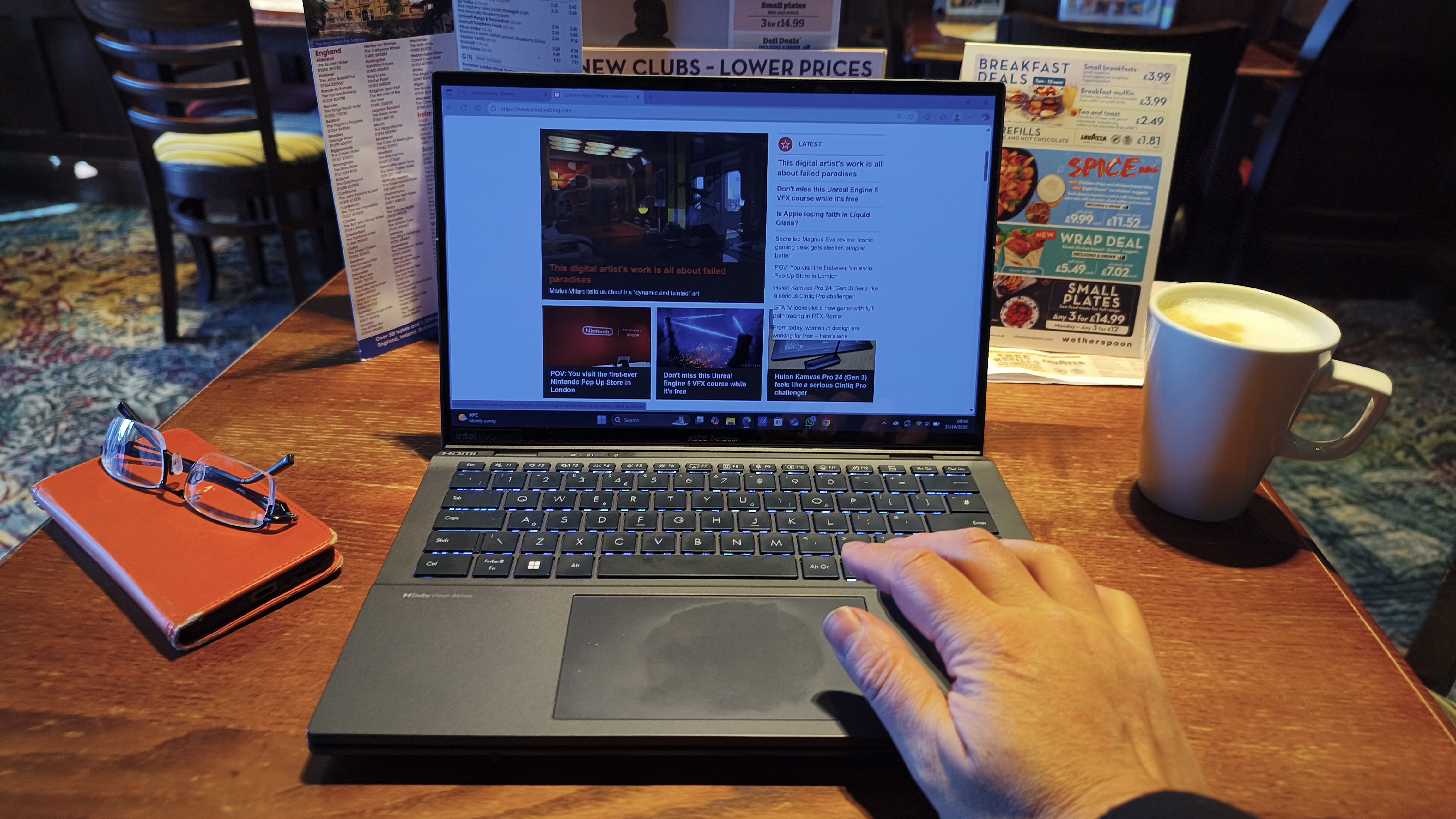
When I'm writing, my research lives on the bottom screen. Not hidden in another tab, not half-visible in a split window—actually there, like having notes spread across a desk. I'll have interview transcripts, reference articles, or even just a mood board visible while I draft. My brain doesn't have to hold information in short-term memory any more because it's right there; always available.
For photo editing, I keep my catalogue and adjustment panels on the lower display while the main image fills the top screen. It sounds simple, but it transforms the experience from "editing photos" to something that feels closer to working in a traditional darkroom; tools within reach, image prominent, everything exactly where it should be.
One afternoon, I was on a Zoom call while simultaneously needing to reference a shared document and take notes. On my MacBook, that would've meant awkwardly switching between windows, apologising for the delay, maybe giving up and using my phone as a second screen.
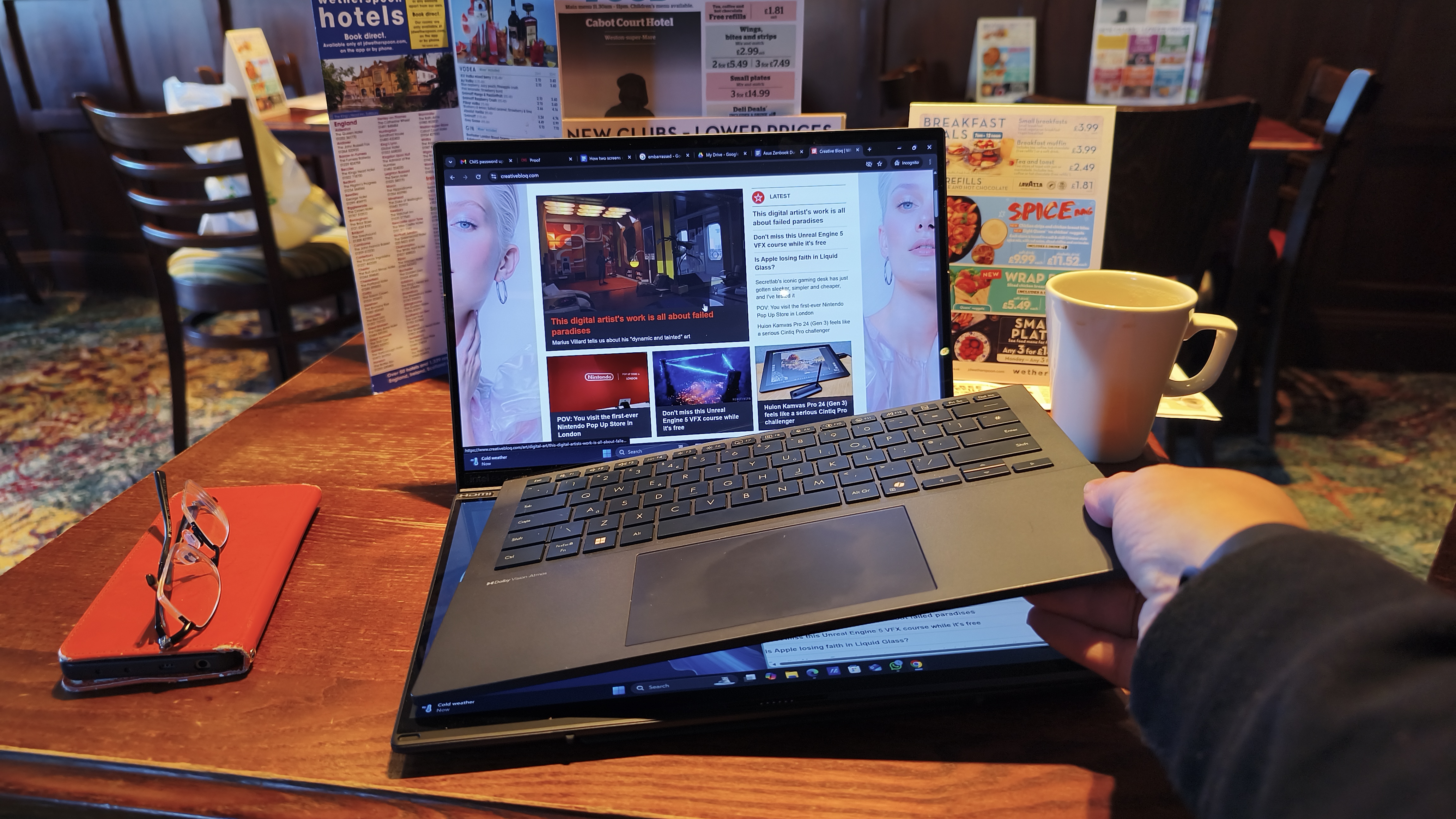
With the Duo, I just... did all three things. The video call stayed front and centre while everything else lived below. It wasn't multitasking; it was just doing my job without obstacles.
What made me a convert
I remember the exact moment I realised I couldn't go back. I was working from a coffee shop and had my Duo in desktop mode with both screens side by side. I was comparing two different cuts of the same video, literally dragging the playhead on one while watching the other. A guy at the next table leaned over and said, "Wait, is that one laptop?" That's when it hit me: this isn't just a different laptop. It's a different way of computing.
I'd be lying, though, if I said the transition was painless.
I missed AirDrop. God, did I miss AirDrop. The seamless way an iPhone and MacBook talk to each other, the ability to instantly share files between devices. Windows has alternatives like Intel Unison, and they work fine, but it's not the same effortless magic.
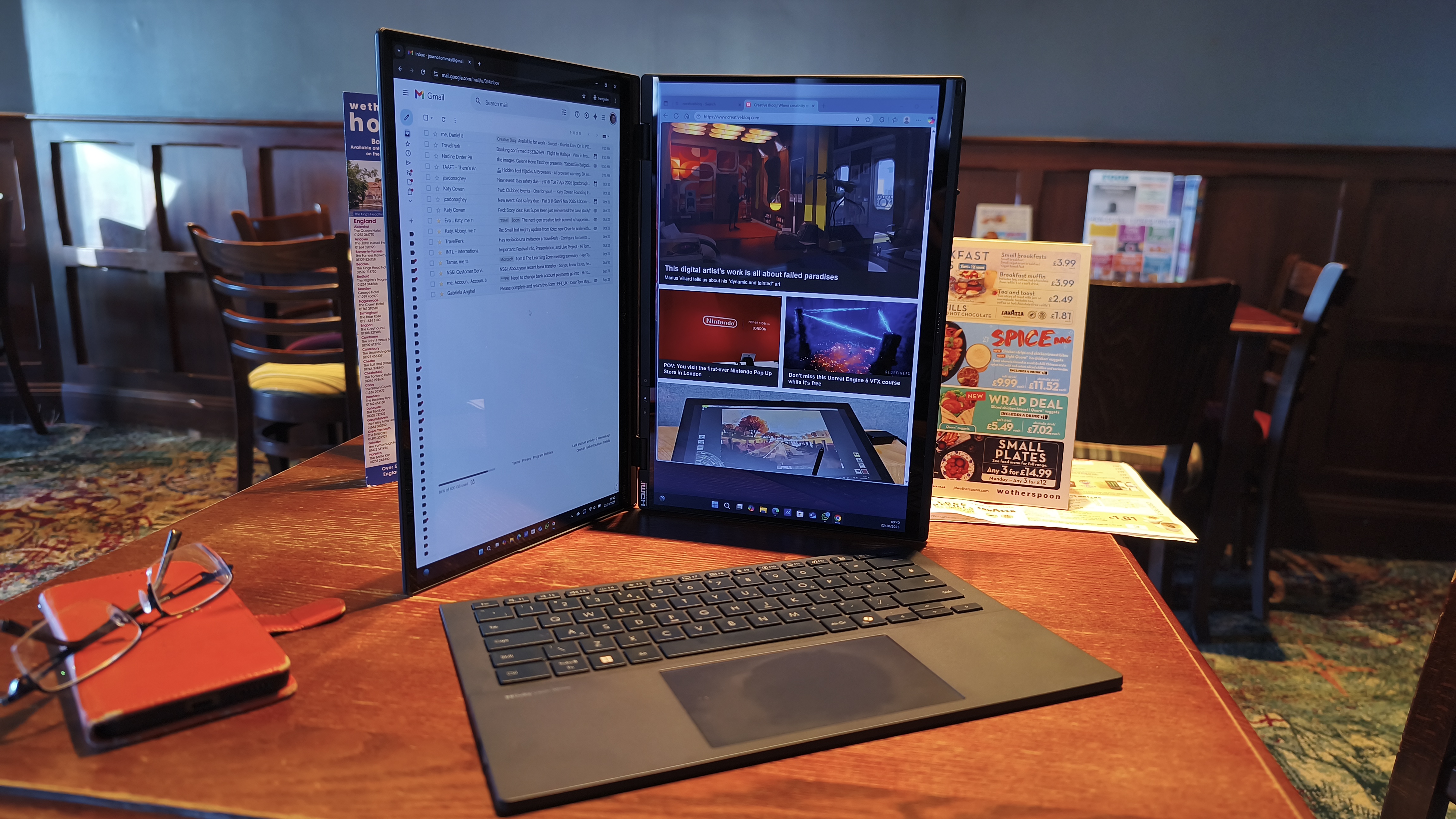
The Zenbook is also heavier than my M1 MacBook. Not by much, maybe a pound. But when you're used to something so featherlight, you notice. And the keyboard, while clever, doesn't have quite the same solid, tactile feel of typing directly on a laptop body. Sometimes I keep it attached just for that traditional laptop sensation.
Battery life is solid for what it is — I get around seven hours of normal work — but my M1 MacBook could go all day and still have juice left. The efficiency of Apple Silicon is no joke. I've also found that opening and closing my Duo in standard mode often makes the screen freeze, necessitating a Ctrl+Alt+Delete, which is annoying to say the least. (Note, though, that my review model is the 2024 model, and apparently this niggle does not occur on the latest, 2025 version). On the plus side, being able to charge my Duo from either side is a godsend; my MacBook only lets me plug in on the left, which is frequently a source of frustration.
Beyond these small details, though, here's a broader truth. If you're someone who values simplicity above all else, who wants tech to disappear rather than announce itself, the Zenbook Duo might feel like too much. It's not a minimal machine. It's bold, adaptable, sometimes even a bit excessive.
But for me? That boldness became freedom.
Why this matters
Here's what I've realised after months with this laptop: creative work isn't linear, and our tools shouldn't force it to be.
When I'm deep in a video edit, I'm not thinking in sequence; I'm thinking in layers. I need to see my timeline, my effects, my colour wheels, my audio meters, my project files. On a single screen, even a large one, something always gets buried. On the Duo, everything gets space to breathe.
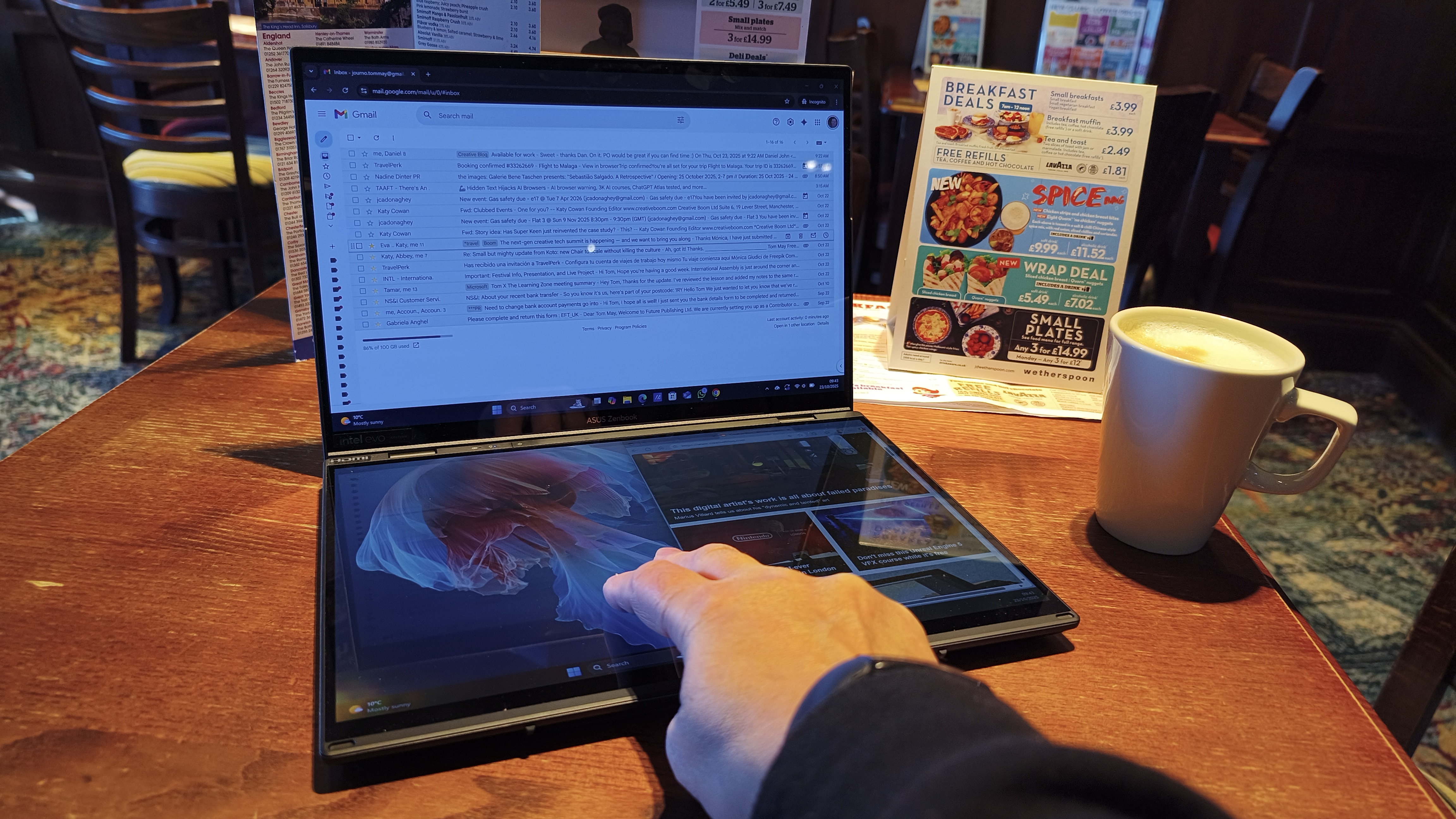
When I'm writing, I'm not just transcribing thoughts; I'm synthesising information, making connections, referencing sources. Having research visible isn't just convenient; it changes how my brain works. Ideas flow differently when you can see your source material rather than having to remember it exists.
Photography, design, even just planning a holiday; they all benefit from having context available without sacrificing your primary workspace. It's not about having more screen; it's about having the right screen for what you're doing.
And having a touchscreen (two of them, actually) matters more than I expected. Quick annotations, intuitive zooming, even just tapping to focus while editing photos; all of these things add a tactile dimension that makes the laptop feel less like a tool I'm operating and more like a space I'm working in.
Should you get one?
We spend often more time with our laptops than our own partners, so they become deeply personal. And so every time someone asks me if they should switch from their MacBook to something like the Zenbook Duo, I say this: it depends what you're running from and what you're running toward.
If you love using the Apple ecosystem, if you prioritise portability and battery life above all else, if you want tech that quietly disappears, stick with MacBook. It's still exceptional. But if you're feeling constrained, if you're tired of window management, if you want your laptop to adapt to you rather than the other way around, if you're curious about what computing could be rather than what it's always been... this is worth exploring.
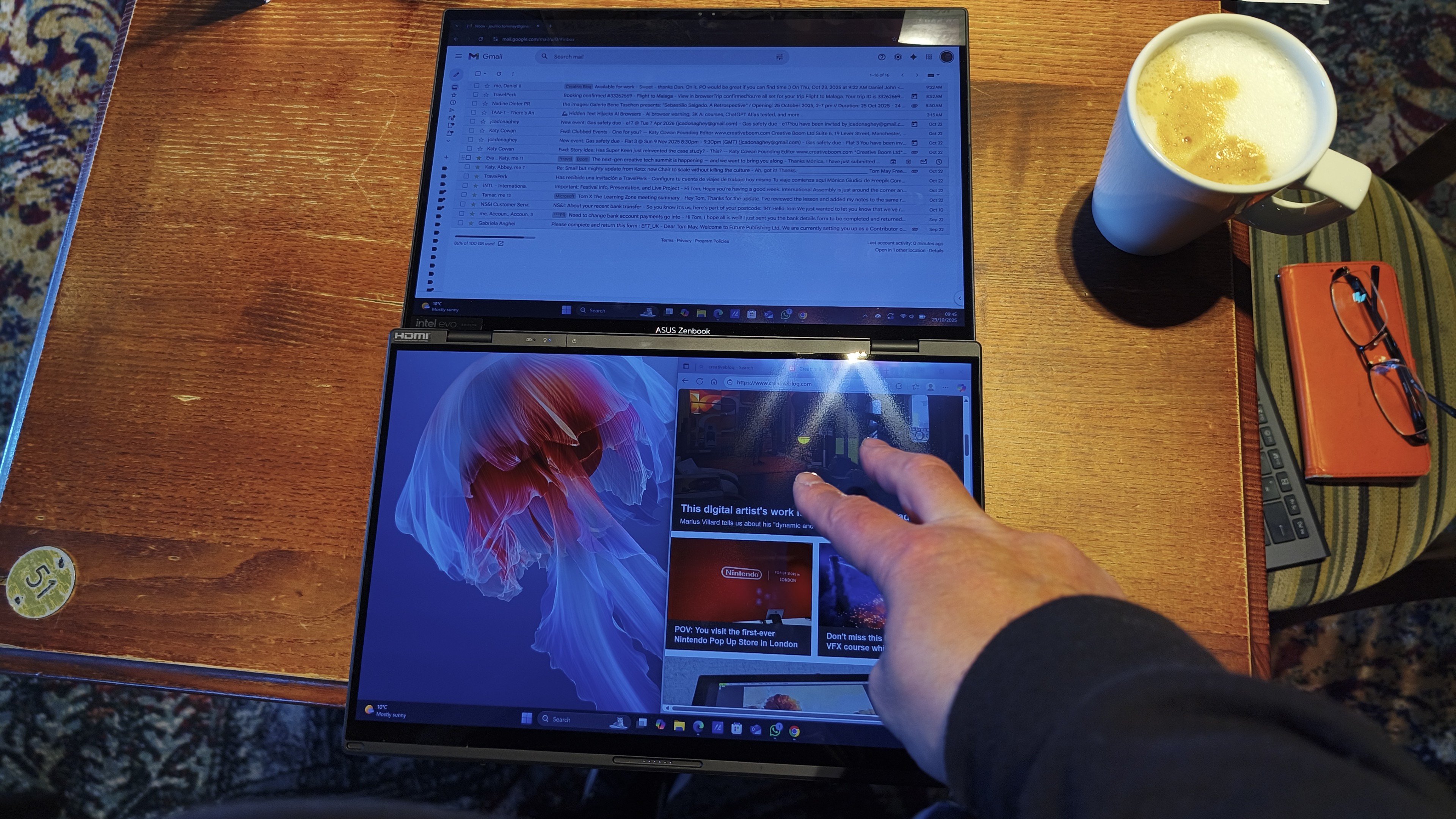
For me, the Zenbook Duo changed how I think about working digitally. It reminded me that the tools we choose shape not just our productivity, but our creativity itself. And sometimes, the best thing you can do is step outside what's comfortable and see what else is possible.
My MacBook is still here, and I still use it. But once you experience what it's like to work without constantly managing screen space, without playing window Tetris, without sacrificing context for content, you realise there is another way.
Two screens didn't just give me more space. They gave me more freedom.

Tom May is an award-winning journalist specialising in art, design, photography and technology. His latest book, The 50 Greatest Designers (Arcturus Publishing), was published this June. He's also author of Great TED Talks: Creativity (Pavilion Books). Tom was previously editor of Professional Photography magazine, associate editor at Creative Bloq, and deputy editor at net magazine.
You must confirm your public display name before commenting
Please logout and then login again, you will then be prompted to enter your display name.
